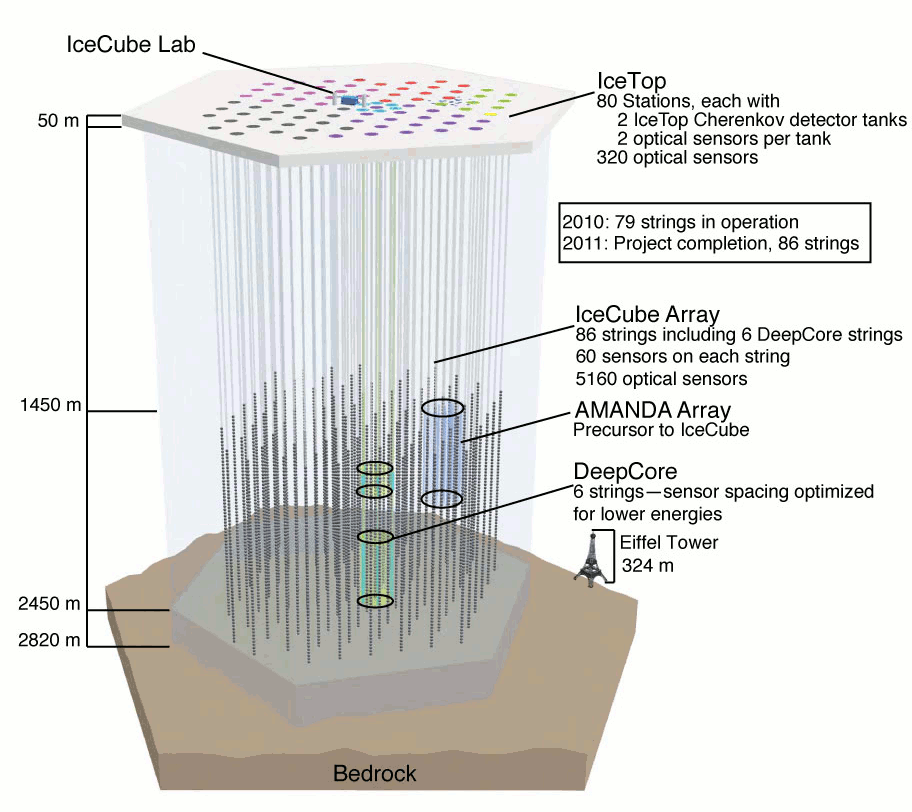Daily Image
03-03-2011Today's Colloquium: Neutrinos on the Rocks
| Submitter: | Colloquium |
| Description: | Speaker: Nick van Eijndhoven (Vrije Universiteit Brussel - IIHE(ULB-VUB)) Astroparticle Physics revolves around phenomena that involve (astro)physics under the most extreme conditions. Cosmic explosions, involving black holes with masses a billion times greater than the mass of the Sun, accelerate particles to velocities close to the speed of light and display a variety of relativistic effects. The resulting high-energy particles may be detected on Earth, and as such can provide us insight in the physical processes underlying these cataclysmic events. Having no electrical charge and interacting only weakly with matter, neutrinos are special astronomical messengers. Only they can carry information from violent cosmological events at the edge of the observable universe directly towards the Earth. At the Inter-university Institute for High Energies (IIHE) in Brussels we are involved in a world-wide effort to search for high-energy neutrinos originating from cosmic phenomena. For this we use the IceCube neutrino observatory at the South Pole, the world's largest neutrino telescope, which is now completed and taking data. One of the research areas at the IIHE comprises studies of transient phenomena, i.e. Gamma Ray Bursts (GRBs) and flares of Active Galactic Nuclei (AGN), which are believed to be the most violent cosmic explosions involving black holes and neutron stars. In this talk I will present the underlying ideas of high-energy neutrino production in explosive cosmic phenomena, and the IceCube detection principles. It will be shown how the combination of IceCube data with satellite observations opens up the possibility of identifying high-energy neutrinos originating from transient cosmic events for the first time in history. Also the potential of Dark Matter searches with IceCube will be addressed and some recent general experimental results will be presented. Image 1: The IceCube neutrino observatory Image 2: The neutrino sky seen by IceCube |
| Copyright: | Nick van Eijndhoven |
| Tweet |  |
